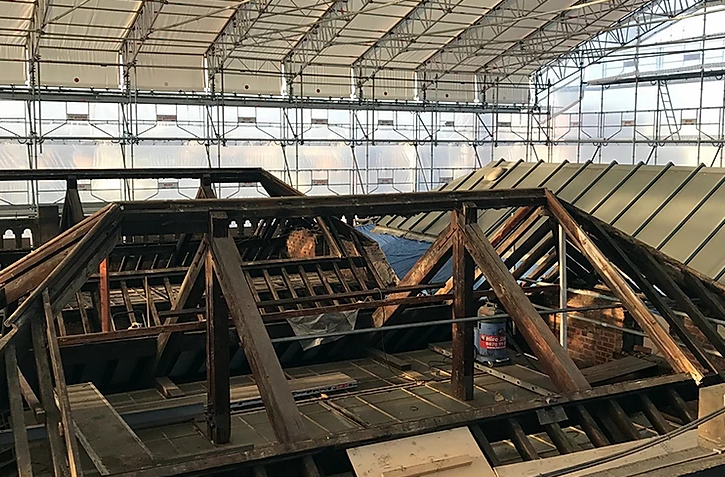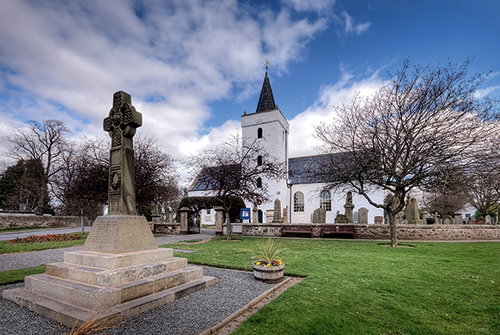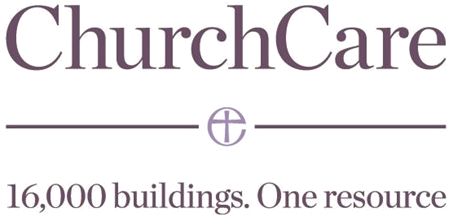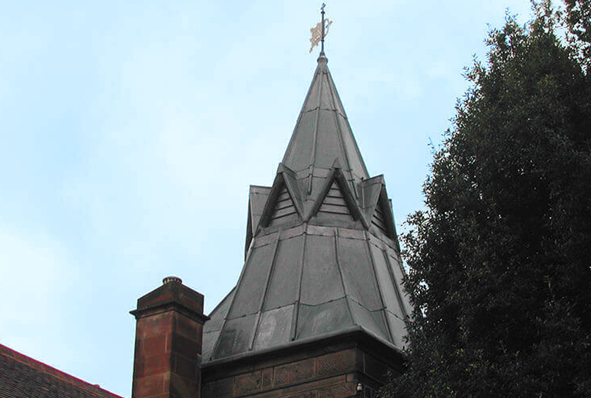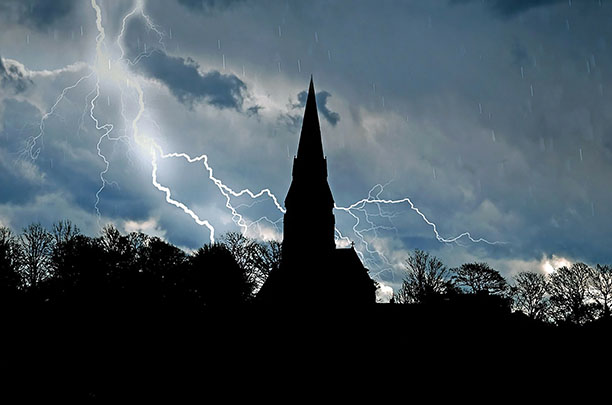Heritage Roofing
Heritage roofing - maintaining our iconic buildings
The UK is home to some of the most iconic buildings in the world, from stunning churches and cathedrals to historic stately homes. Each and every one of these remarkable feats of architecture requires regular maintenance to ensure they remain in the very best condition, allowing them to be enjoyed for generations.
Traditional Lime
Lime: it’s better for buildings – and for the environment
It is now fairly well known that cement is not good for old buildings and that lime mortar should be used. But why? What are the advantages and what are the disadvantages? In order to begin to answer those questions it is necessary to understand the nature of traditional building, the process by which buildings used to be built, and how it differs from modern construction, the process by which we build today.
Audio Visual
Audio visual equipment in church buildings
This guidance is issued by the Church Buildings Council under section 55(1)(d) of the Dioceses, Mission and Pastoral Measure 2007. As it is statutory guidance, it must be considered with great care. The standards of good practice set out in the guidance should not be departed from unless the departure is justified by reasons that are spelled out clearly, logically and convincingly.
Read More...
CRE Events
After the Midlands, onward to Milton Keynes
"CRE Midlands reminded me of the giddy days when it first began – the venue was packed with exhibitors and visitors and there was a busy atmosphere. The whole thing looked great."
Insurance
You need to ensure that reasonable precautions are in place at your church to keep it safe for those who use it. To do this, you need to think about what might cause harm to people.
You will then need to decide if the precautions already in place are adequate. If they are not, you may need to identify further action to prevent any danger. When done formally, this is known as a risk assessment.
Lead Roofing
Lead is one of the oldest materials in the roofing industry and is still commonly used throughout the world today.
Lead roofing is a traditional roofing method which has been used in the industry for hundreds of years, and is therefore proven to be extremely reliable. Lead roofing, and sand-cast lead, in particular is ideal for old buildings such as churches or historical renovations, whereas milled lead roofing is a mass-produced alternative, used for precision and accuracy in homes and commercial buildings alike.
Lightning Protection
When lightning strikes are you protected against this act of God?
The issue of lightning protection in churches is one that has exercised this publication for many years. In this four-part series of spotlights on the issue we will be revisiting various aspects of the subject, beginning with an overview of current thinking.
Home
A Suffolk Georgian gem rises from the ashes
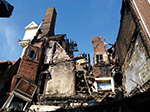 When a major fire raged through the Grade One-listed Cupola House in Bury St Edmunds in 2012, the fire service called upon local specialist builders Seamans Building to make the building safe. After bringing in long-reach demolition plant to help secure the structure, Seamans embarked upon clearing the debris, preparing the site for surveys and erecting a temporary scaffolded structure to preserve the integrity of what remained.
When a major fire raged through the Grade One-listed Cupola House in Bury St Edmunds in 2012, the fire service called upon local specialist builders Seamans Building to make the building safe. After bringing in long-reach demolition plant to help secure the structure, Seamans embarked upon clearing the debris, preparing the site for surveys and erecting a temporary scaffolded structure to preserve the integrity of what remained.
Architects Purcell then began work, in partnership with English Heritage, St Edmundsbury Borough Council and a team of specialist consultants, to stabilise the surviving built fabric and reconstruct the lost historic features. Using all the available information about the building, which was built in 1693, the architectural team recreated the principal spaces and reintroduced many of the building’s architectural details, including panelling, cornices, architraves and the staircase.
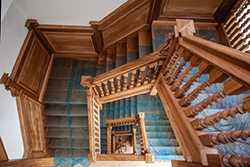 Following the tender process, Seamans Building were appointed as main contractor for the reconstruction work. Many of the company’s directly-employed skilled craftsmen were involved on the project and it was an excellent opportunity for their six apprentices to experience working on an historic structure.
Following the tender process, Seamans Building were appointed as main contractor for the reconstruction work. Many of the company’s directly-employed skilled craftsmen were involved on the project and it was an excellent opportunity for their six apprentices to experience working on an historic structure.
The company had already received local awards for work on two Grade One-listed buildings – Woodbridge Tidemill and the Wolsey Art Gallery next to Ipswich’s Christchurch Mansion – however, the challenges and scale of working on the confined site in the centre of Bury St Edmunds tested the resolve and skills of all involved.
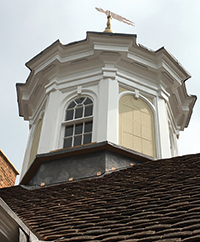 Throughout the project Seamans worked closely with the consultancy team, in particular Purcell and structural engineers Richard Jackson Engineering Consultants, to construct a building that replicates the original structure whilst being upgraded to cater for current building and fire regulation standards.
Throughout the project Seamans worked closely with the consultancy team, in particular Purcell and structural engineers Richard Jackson Engineering Consultants, to construct a building that replicates the original structure whilst being upgraded to cater for current building and fire regulation standards.
Wherever possible the original fabric that survived the fire has been salvaged and re-used. These include elements of the stairs, panel mouldings, a significant amount of the exterior cornice and the metal fireplace grates which have been fitted back into the reconstructed chimneys.
A new steel frame, which has been intricately threaded through what remains of the original timber frame, is completely concealed within walls and behind the wall linings. It has been fitted to distribute the weight of the new and surviving structures evenly over the original basement.
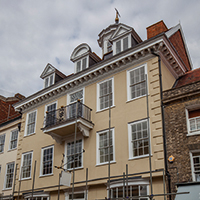 In May the new timber-framed cupola was hoisted into the air and placed atop the roof, between the two towering chimneys. Both required considerable reconstruction after the fire left them in an unstable condition.
In May the new timber-framed cupola was hoisted into the air and placed atop the roof, between the two towering chimneys. Both required considerable reconstruction after the fire left them in an unstable condition.
High levels of craftsmanship can be found in the cupola construction, the oak staircase, room panelling, chimney brickwork, plastering and the ornate wood carvings that adorn the building both inside and out. Ben Whatling, Seamans production manager, who was contract manager on the project, pointed to the local craftsmanship involved. He said: “While the devastating fire was a blow to the whole of Bury St Edmunds, it is reassuring that the necessary skill and expertise was found locally to reconstruct this heritage landmark. Our workforce and supply chain have committed whole heartedly to producing a quality product that will hopefully last another 300 years.”
The project was completed in July and is awaiting its new tenants.
• For further information visit www.seamans.co.uk












